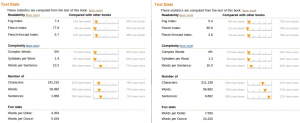A note on Computational Models of Psycholinguistics
I would like to sum up a clear synthesis and state of the art of scientific traditions and ways to deal with language features as a whole. In a chapter entitled ‘Computational Models of Psycholinguistics’ and published in the Cambridge Handbook of Psycholinguistics, Nick Chater and Morten H. Christiansen distinguish three main traditions in psycholinguistic language modeling :
- a symbolic (Chomskyan) tradition
- connectionnist psycholinguistics
- probabilistic models
They state that the Chomskyan approach (as well as nativist theories of language in general) outweighed until recently by far any other one, setting the ground for cognitive science :
more ...“Chomsky’s arguments concerning the formal …
